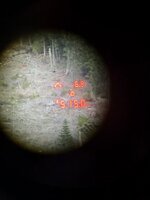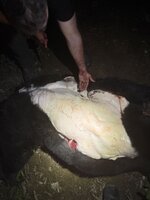Ok I'll check them out, I think I found one.
I do accept that a small bullet in the vitals is going to kill a large animal. However, more energy behind the bullet would just allow you to take shots you may not take with a less powerful cartridge. For example on quartering shots at long range I think more mass and velocity is useful for punching through non vital organs or joints, if necessary. Is that not the case?
I think I wrote this exact same paragraph almost word for word about three years ago on 24 Hour Campfire.
With that said, if you want to use a magnum rifle, for whatever reason, go do it.
I offer advice. I’m in no position to dictate how you spend your time and money. But, you seem open to learning, so I will share my thoughts on the matter.
Assuming you aren’t trying for a Texas Heart Shot, there is no angle on a North American deer species at which a proper bullet impacting above 1800 FPS won’t penetrate to the vitals and do sufficient damage to kill it.
I won’t advise doing a hard-quartering-away shot in any case - not because of lack of penetration - but because I don’t want to hit it in the guts or stomach and spread the contents through the animal. I want a clean kill in every sense of the word.
Until Defenders of Wildlife start issuing flak jackets to elk and deer, I don’t see any need for a magnum cartridge inside of 500 yards. I believe that a .243 or 6mm CM or 6.5 CM is the only cartridge a North American deer hunter “needs.” I say that because several states still forbid the use of .224 calibers on big game (due to regulations written sixty years ago, when people didn’t know how terminal ballistics work and modern bullets didn’t exist, even though people were killing moose with the .220 Swift 70 years ago). And I think that those cartridges are close to the limit of “affordable to shoot a lot” and “pleasant to shoot a lot.”
The cartridge is just the propellant for the bullet. Its job is to deliver the bullet to the animal with sufficient velocity to ensure that bullet type expands consistently. For some bullets, consistent expansion requires more impact velocity than for others. Knowing how fast the bullet you are using needs to be going for consistent expansion is part of your job as a hunter.
Once you know that, match your maximum effective range to the cartridge/bullet combination that makes sense. You have set a self-imposed restriction of 500 yards. That is a very common hard limit among ethical hunters. There are those for whom it is ethical to shoot past that range. For most people, however, this will be well-short of 500 yards. I determine my maximum effective range on three things:
1. I personally don’t ever plan to shoot at any animal past 600 yards. My concern here is time of flight. The farther out the animal is located, the more that can happen after I pull the trigger. Even if I can hit steel way past that, animals can move, wind calls are hard, etc.
2. This range is also limited by the impact velocity of the rifle at that range. If I am shooting 123-grain ELDMs from my 6.5mm Grendel, that’s around 400 yards. If I were shooting a typical monolithic bullet, that range would be lower.
3. I also won’t take any shot past the range at which I know I can hit 10/10 on an 8” target from that field position under those field conditions with that rifle.
Also, the only thing stopping you from having all the rifles you want is budget. For all my “the .243 can do it all,” I plan to get a 9.3x62. Why? After all it is more expensive, more recoil, and less effective in some circumstances than many rifles I own…. Doesn’t matter. I want one.




